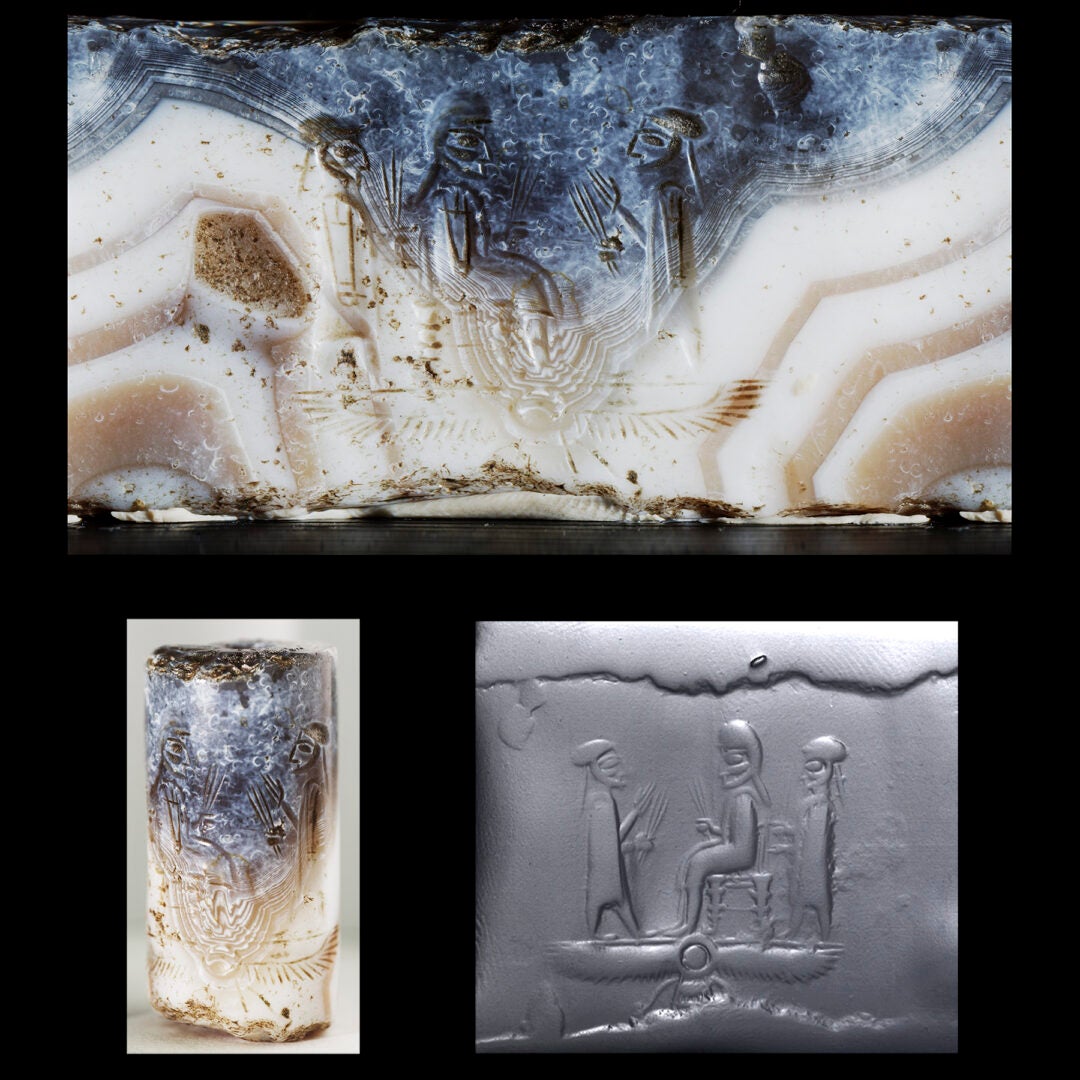Cylinder Seal Rollouts
Cylinder Seals are small objects carved from stone or shell, about the size of a AAA battery, up to a size D battery. They were used much like a signet ring in the Middle Ages, or a credit card today, in that they were rolled across clay tablets to verify a person’s participation in an economic transaction. In other words, they were the ancient equivalent of a signed charge card. West Semitic Research and others have developed a way to photograph cylinder seals and other cylindrical objects as 360 degree rollouts—panoramic photographs in reverse.
Rollout Setup
In order to capture 360° rollout, we use a platform that supports a view camera with a Better Light scanning back, and a small platform that rotates, the speed of which is controlled by a stepper motor, coordinated with the speed of the scanning back. The cylinder seal rotates and the scanning back captures it one line at a time. A light is aimed at the place on the cylinder seal that can best be captured by the camera.

Cylinder Seal
A conventional image, lower left, shows the cylinder seal as it normally appears. The rollout, top, essentially flattens out the cylinder so it can be viewed all at once. Scholars usually make a seal impression and study that (lower right). However, photographing the stone itself often allows one to see how the artisan incorporated the appearance of the stone into the design of the seal. In this case, note how the white and brown veins in the stone slant down to a “V” shape, which coincides with the image of the sun disk beneath the throne of one of the magi.

Cylinder seal roll out.
Note in this example how the striations in the stone seem to emanate from the shoulders of the figure on the left, the sun god, Shamash. This would be totally missed in a seal impression.



